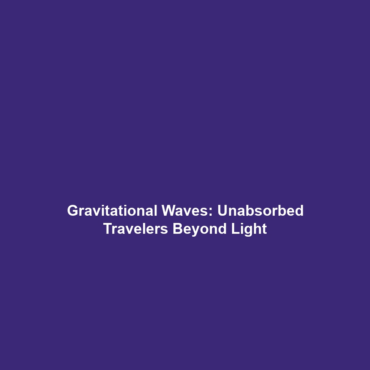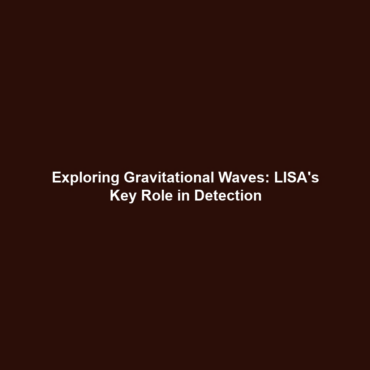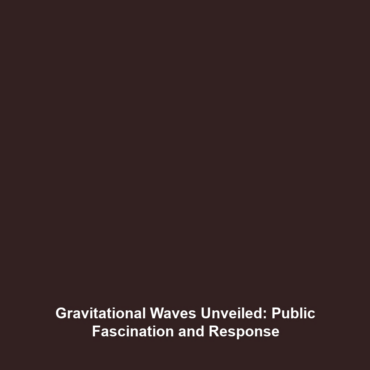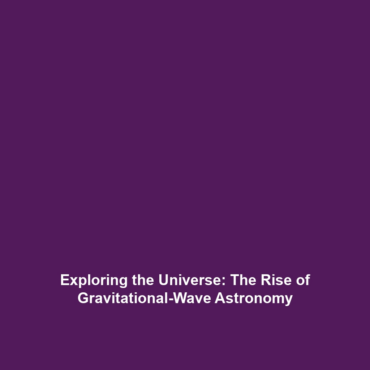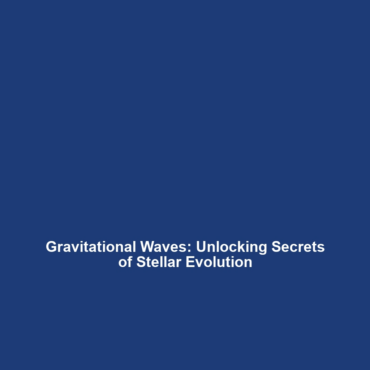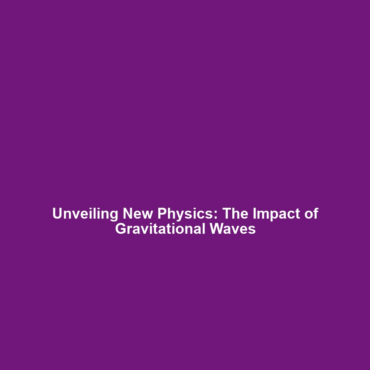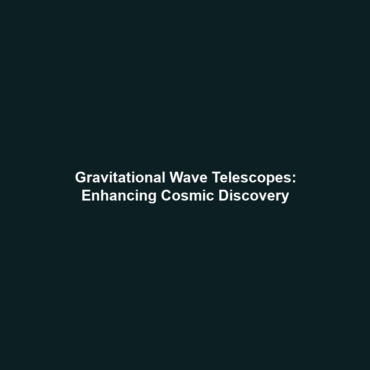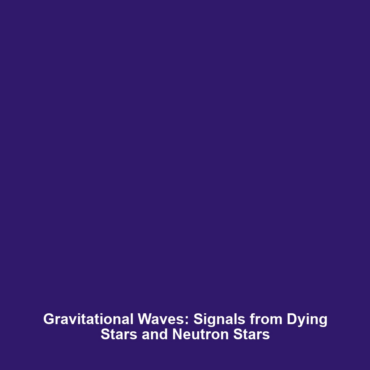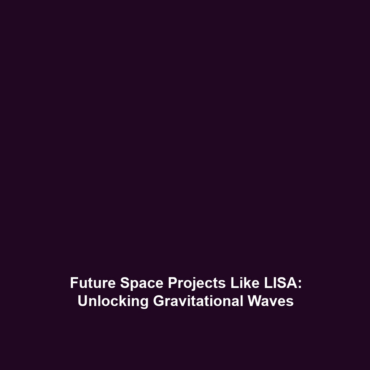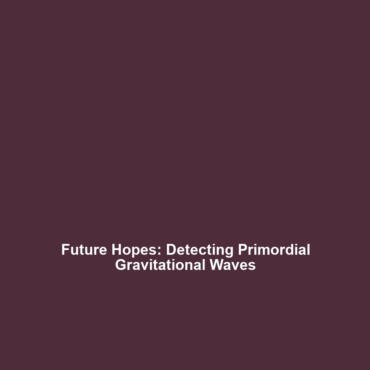Gravitational Waves Travel Without Being Absorbed or Scattered, Unlike Light
Introduction
Gravitational waves are ripples in spacetime caused by some of the universe’s most violent and energetic processes. Unlike light, which can be absorbed and scattered by matter, gravitational waves travel through the cosmos unimpeded, providing a unique window into the universe’s most profound secrets. This inherent property of gravitational waves not only establishes their significance in astrophysics but also enhances our understanding of cosmic events, such as black hole mergers and neutron star collisions. Exploring how gravitational waves travel without being absorbed or scattered is pivotal in advancing our knowledge within the broader category of gravitational waves.
Key Concepts
The Nature of Gravitational Waves
Gravitational waves are generated by accelerations of massive objects, such as during a supernova explosion or when two black holes orbit each other and eventually collide. The key concepts surrounding gravitational waves include:
- Einstein’s Theory of General Relativity: This theory predicts the existence of gravitational waves as a consequence of mass-energy distorting spacetime.
- Propagation: Gravitational waves can propagate through the universe at the speed of light, undeterred by the presence of matter.
- Detection: Advanced experiments like LIGO and Virgo have been crucial in detecting these waves, revealing incredible insights into the nature of our universe.
Applications and Real-World Uses
Understanding how gravitational waves travel without being absorbed or scattered has substantial implications for science and technology. Applications include:
- Astronomical Observations: Gravitational wave astronomy allows scientists to observe cosmic events that are invisible in electromagnetic spectra.
- Testing Fundamental Physics: The study of gravitational waves challenges and confirms aspects of general relativity and offers insights into the fundamental structure of spacetime.
- Potential for Communication: Research into the unique properties of gravitational waves may hold future potential as a medium for communication across vast distances.
Current Challenges
Despite the exciting possibilities, several challenges hinder the study and application of gravitational waves:
- Detection Sensitivity: Current detectors face limitations in sensitivity that restrict their ability to observe more distant cosmic events.
- Data Interpretation: The analysis of detected signals can be complex, requiring advanced algorithms and computation to differentiate genuine signals from noise.
- Funding and Resources: Ongoing research and expansion of detection capabilities require significant investment and resources.
Future Research and Innovations
The landscape of gravitational wave research is evolving rapidly, with several promising avenues for future exploration:
- Next-Generation Detectors: Innovations like the space-based LISA (Laser Interferometer Space Antenna) aim to enhance the detection of low-frequency gravitational waves.
- Multi-Messenger Astronomy: Integrating gravitational wave data with electromagnetic observations can provide a more comprehensive view of cosmic events.
- Theoretical Advances: Ongoing theoretical work aims to explore the implications of gravitational waves on dark matter and dark energy, broadening our understanding of the universe.
Conclusion
Gravitational waves travel through the universe without being absorbed or scattered, a property that sets them apart from light and marks their significance in the field of astrophysics. Understanding these waves enhances our capacity to observe and interpret cosmic phenomena, drives technological innovation, and prompts challenging questions about the fundamental laws of physics. As research continues, it is crucial to support initiatives in gravitational wave astronomy. For those interested in further exploration, consider reading more about detecting gravitational waves or the impact of gravitational waves on astronomy.
